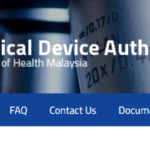
Table of Contents
How to do Clinical Evaluation Report: MDCG 2020-13
One way to ensure that your CER is complying to CE requirements is to ensure that that your CER contain all the elements that the Notified Body would be checking for in their CEAR. Please see below the summarized contents. Actual contents can be found on the MDCG document that can be downloaded here.
Template CEAR
Section A: Administrative particulars (notified body, manufacturer, product and clinical evaluation report reference)
Section B: Reviewers involved in the notified body assessment of the clinical evaluation
Section C: Device description, classification, clinical evaluation plan, information materials supplied by the manufacturer, common specifications and harmonised standards applied, equivalence and state of the art
Section D: Clinical literature review
Section E: Clinical investigations and related documentation
Section F: PMS, PMCF and the plan for updates
Section G: IFU, SSCP, labelling and other information supplied with the device
Section H: Summary of all available data and conclusions
Section I: Clinical evaluation consultation procedure for certain class III and class IIb devices (Article 54)
Section J: Where demonstration of conformity based on clinical data is not deemed appropriate (Article 61(10))
Section K: The voluntary clinical consultation on the clinical development strategy (Article 61(2))
How to do Clinical Evaluation Report: Common Mistakes
If literature review route has been used for generating clinical data (which is not surprisingly most of the case for low to mid risk device), but the search term used in the literature search did not contain actual or equivalent device, pivotal data may not be obtain. Surprisingly, a lot of clinical evaluation report (CER) did not include literature search on the device itself. The reason might be because a lot of clinical writers assumed that no data is present. However it is important to include this search item in the CER drafting process as this is a requirement.
Equivalence of device is not justified or selected articles used in the CER are not reference from equivalent/ direct device. Equivalence doesn’t fully address clinical, technical, biological characteristics referenced in Appendix A1 of MEDDEV 2.7.1 Rev.4. In the latter case, it is due to using literature not linked to any equivalent/ direct device.
Equivalence not based on a single device. Equivalence of every single device to the device under evaluation should be fully investigated, demonstrated and described in the clinical evaluation report.
If the literature route based on the equivalence is not deemed appropriate, consider other available clinical evaluation route (eg. MDD Annex X 1.1d). This means risk analysis and pre-clinical testing can be used to address safety and performance consideration that cannot be demonstrated through literature route.
No evidence that the IFU or label is generated based on the output of the CER. This means there is no connection that the IFU and label are generated based on considerations from the CER.
Risk / benefit profile of the actual device is not clearly defined and it is not clear what the current knowledge / state of the art is used to determine the acceptable benefit/risk profile.
In the demonstration of requirement on performance (MDD ER 3), performance claims included in Technical File are not addressed. Performance claims should be supported by the objective evidence including pre-clinical testing and scientific literature.
In the demonstration of requirement on acceptability of undesirable side effects (MDD ER 6), there is no information of potential undesirable side effects and it is not confirmed that sufficient number of observations is reviewed.
There is no justification for use/selection of author/approver in the clinical evaluation report.
Declaration of interests of the clinical evaluators is provided however, the declaration does not disclose whether financial interests / benefits are granted outside the current work as an evaluator and if granted, what types of financial interests / benefits are given. In addition, declaration of interests should be also dated and signed by the manufacturer.





Pingback: EU Medical Device Regulations | CMS MedTech